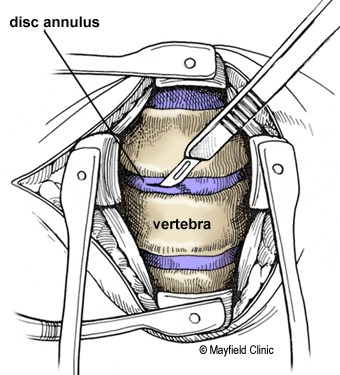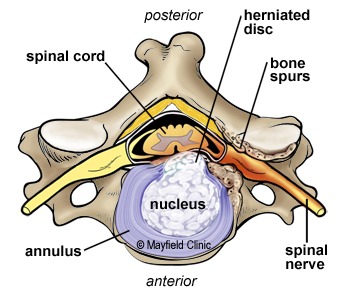Anterior Cervical Discectomy & Fusion (ACDF)



Anterior Cervical Discectomy and Fusion (ACDF) is a surgical procedure commonly used to treat cervical spine conditions such as herniated discs, degenerative disc disease, and spinal instability. The procedure involves removing a damaged or herniated disc from the cervical spine and fusing adjacent vertebrae to stabilize the spine. Here is an overview of the approach for ACDF:
Preparation:
Medical Evaluation: Patients undergo a thorough medical evaluation, including imaging studies (such as MRI or CT scans), to assess the extent of the cervical spine issue.
Discussion with Surgeon: The surgeon explains the procedure, discusses potential risks and benefits, and answers any questions the patient may have.
Procedure:
Positioning: The patient is typically positioned on their back on the operating table.
Anesthesia: General anesthesia is administered to ensure the patient is asleep and pain-free during the procedure.
Incision: An incision is made on the front side of the neck (anterior approach). The exact location and size of the incision depend on the number of discs to be addressed.
Soft Tissue Dissection: The surgeon carefully moves aside the muscles, blood vessels, and other soft tissues to expose the cervical spine.
Disc Removal (Discectomy): The damaged or herniated disc is removed to decompress the spinal cord or nerve roots.
Bone Graft Placement: A bone graft is placed in the empty disc space to promote fusion between adjacent vertebrae. The bone graft may be taken from the patient’s hip (autograft) or obtained from a bone bank (allograft).
Implant Placement: In some cases, a metal plate and screws are used to stabilize the vertebrae during the fusion process. The hardware holds the bones in place while fusion occurs.
Closure: The incision is closed with sutures or staples.
Recovery:
Hospital Stay: The length of the hospital stay is typically one to two days.
Neck Brace: A neck brace or collar may be worn for a specified period to support the neck during the initial healing phase.
Activity Restrictions: Patients are advised to avoid certain activities, such as heavy lifting or strenuous exercise, during the initial recovery period.
Follow-up:
Postoperative Visits: Patients have follow-up visits with the surgeon to monitor the healing process, address any concerns, and assess the effectiveness of the procedure.
Imaging Studies: X-rays or other imaging studies may be conducted to evaluate the fusion progress.
Potential Risks and Considerations:
General Surgical Risks: Infection, bleeding, and complications related to anesthesia.
Failure of Fusion: In some cases, fusion may not occur as expected, leading to ongoing symptoms.
Hardware Issues: The metal plate and screws may cause discomfort or complications, necessitating their removal in some cases.














